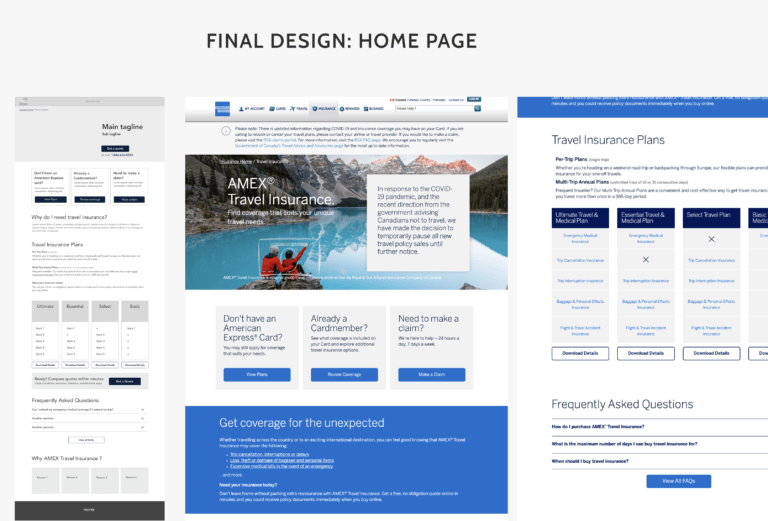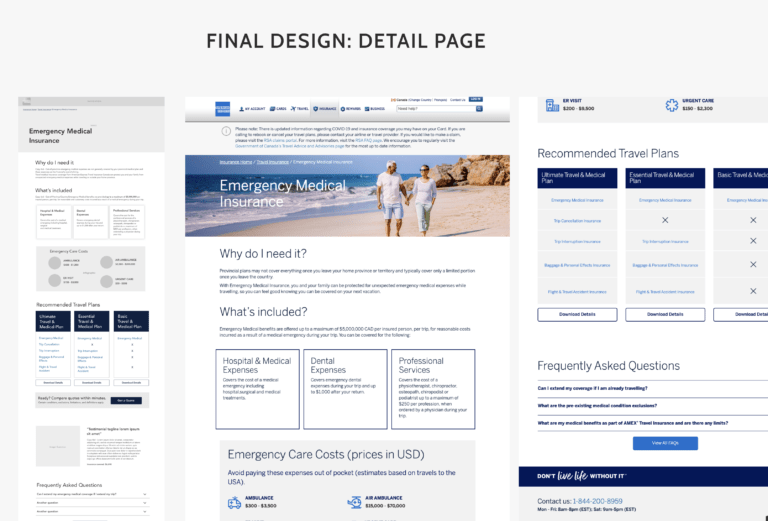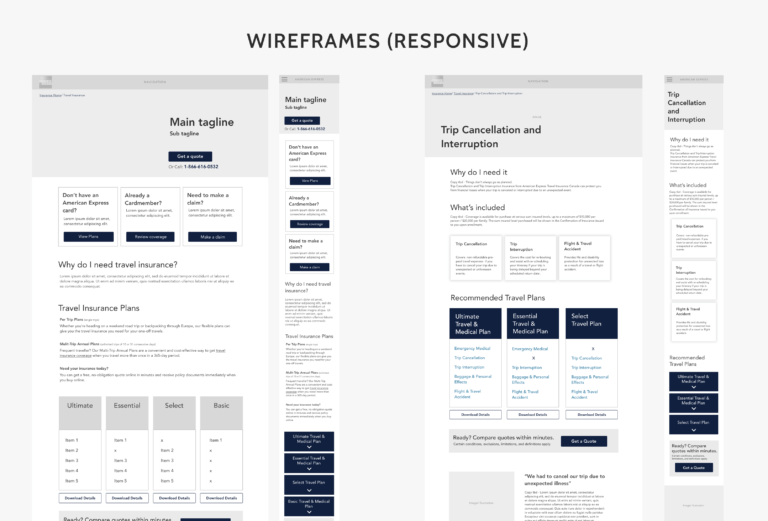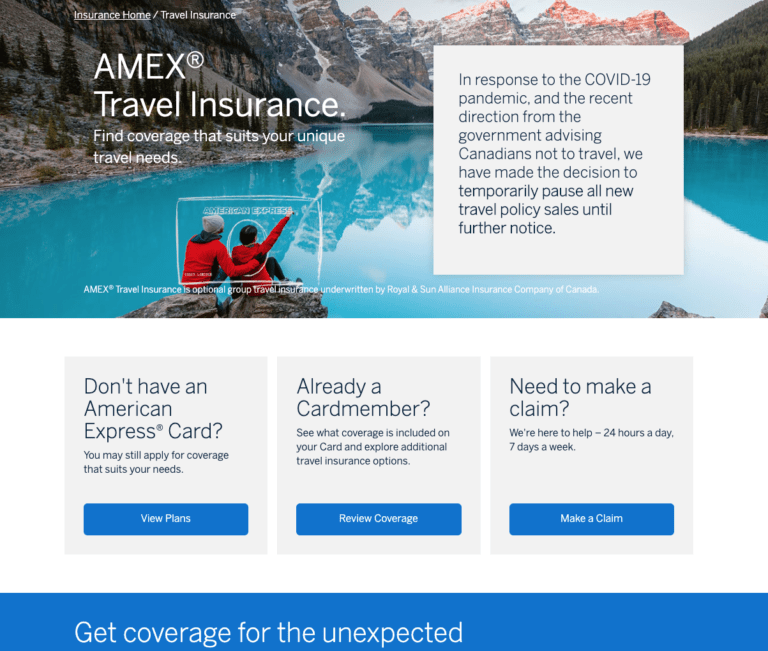AMEX: Redesign Travel Insurance
AMEX: Travel Insurance Redesign
User Research

Time
Tasks
About the Project
I supported this project as a UX Designer and content analyst by supporting the problem analysis, requirement gathering and solution in form of interactive wireframes for a responsive design.
The Problem
AMEX saw a decline in their travel insurance revenue: people were purchasing less frequently online, some insurance detail pages saw a big drop in page visits. A redesign of the landing page with an improved content strategy should result in a better performance.
The Process
Even though AMEX approached me with a goal in mind (increase online sales and page visits), we needed to analyze the existing pain points in more detail to understand, what we exactly wanted to improve.
- Problem Statement: I started with taking a closer look at data, and interviewed stakeholders to identify the causes: what is holding users back from coming to the website and/ or purchasing insurance?
Assumptions & Requirements: Based on the collected assumptions, that we aligned on as a team, I defined the requirements and specific ideas for changes.
These steps were the basis for the next phase, the work on wireframes.
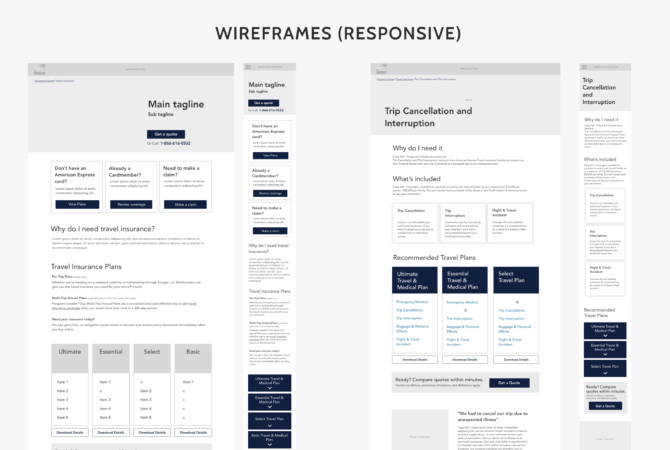
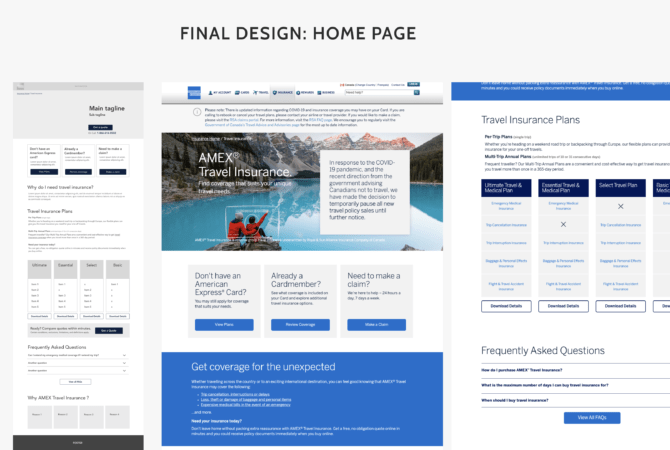
Wireframe Design
With wireframes we explored solutions to improve the user experience:
- Wireframes: Created an interactive prototype to address the core issues: better linkage across detail pages for improved findability of content, simplified structure to give a better overview of content (i.e. price comparison for insurance packages)
- Documentation: I presented the wireframes to the development team to make sure to get input on feasibility. The wireframes were annotated as well for better communication.
Outcomes & Learnings
The redesign was successful and the online purchase rate for travel insurance went up. We struggled with some SEO drawbacks initially (as it is often the case for redesigns), but could hit the initial success rate quickly.
Internal learnings:
- Start with assumptions to come to a good problem statement
Personal learning:
- Success criteria: Have proper goals in place before starting the design process
